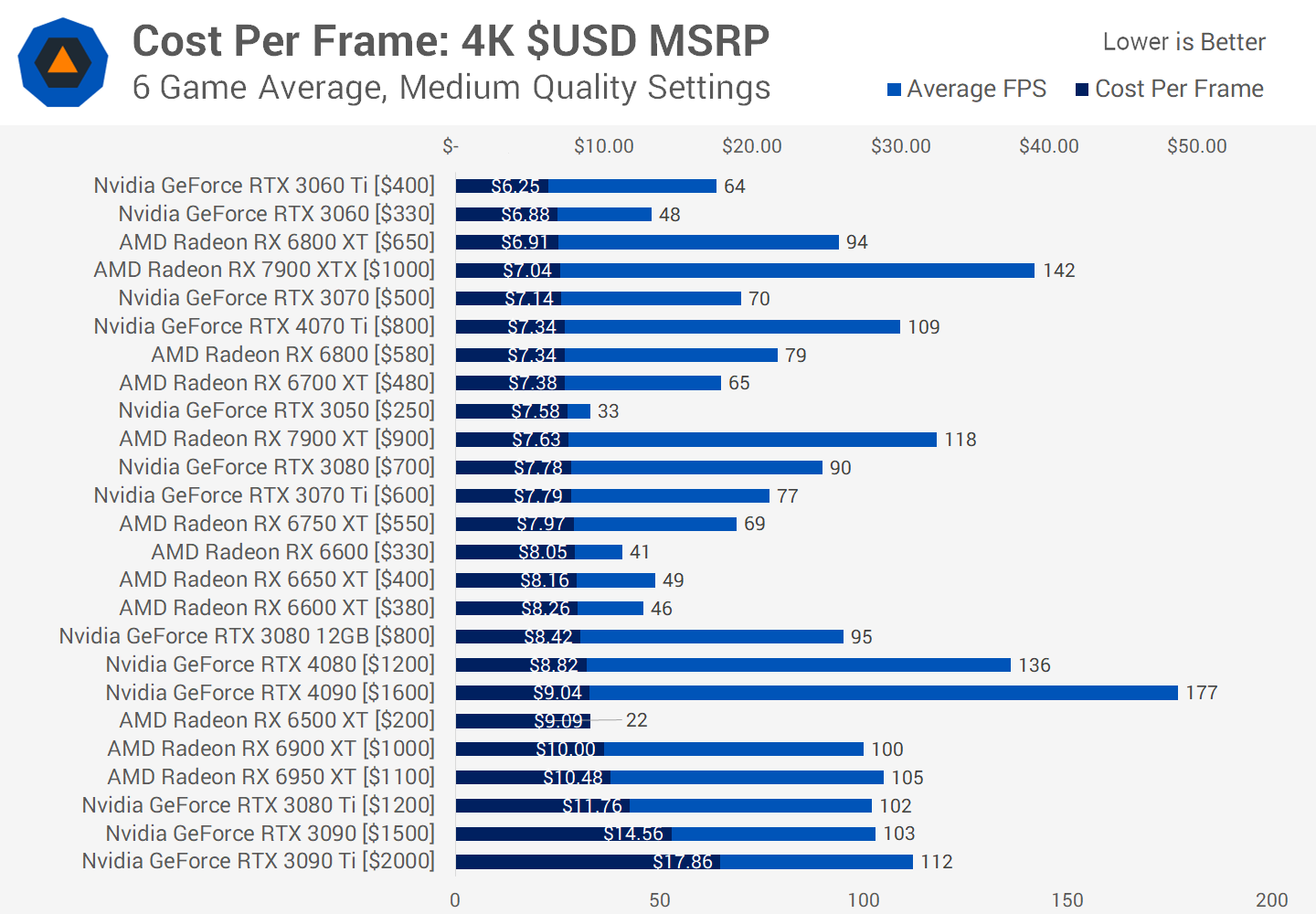GPU Price Increases: Causes And Potential Solutions

Table of Contents
The Impact of the Global Chip Shortage on GPU Prices
The global chip shortage has significantly impacted the availability of GPUs, directly contributing to the GPU price increases we're seeing. This isn't just about GPUs; it's a widespread issue affecting the entire electronics industry.
Supply Chain Disruptions
The complexities of the semiconductor supply chain are vast, involving intricate networks of design, manufacturing, and distribution. Disruptions at any point in this chain can have cascading effects, leading to shortages and price hikes.
- Increased demand: The pandemic spurred a surge in demand for electronics, from laptops and smartphones to gaming consoles, all relying heavily on semiconductors. This unprecedented demand overwhelmed existing production capacity.
- Factory closures and logistical bottlenecks: COVID-19 lockdowns and related restrictions disrupted manufacturing and logistics, causing delays and shortages of essential components. Shipping costs also soared, adding to the overall cost of GPUs.
- Geopolitical tensions: International tensions and trade disputes further complicated the supply chain, impacting manufacturing and shipping routes, adding to the instability and driving up costs of GPUs.
Increased Manufacturing Costs
The rise in raw material costs and energy prices has significantly increased the overall manufacturing cost of GPUs. This is a global phenomenon impacting various industries, and the GPU market is no exception.
- Silicon wafer costs: The raw material for chips, silicon wafers, experienced a substantial price increase due to high demand and supply chain disruptions.
- Specialized materials: The production of GPUs requires numerous specialized and often rare materials, each subject to its own price fluctuations. These increased costs are directly passed on to consumers.
- Energy inflation: The increased cost of energy needed to power manufacturing facilities adds significantly to the production cost of GPUs, impacting the final price. Inflation further exacerbates these rising costs.
The Rise of Cryptocurrency Mining and its Effect on GPU Availability
The profitability of cryptocurrency mining, particularly Ethereum mining before the merge to proof-of-stake, fueled a massive surge in demand for high-performance GPUs. This greatly impacted GPU availability and pricing.
High Demand from Cryptocurrency Miners
Cryptocurrency mining relies heavily on powerful GPUs to solve complex mathematical problems, validating transactions and earning rewards. The higher the GPU's hash rate (processing power), the more profitable mining becomes.
- GPU hash rate and mining profitability: The direct correlation between a GPU's processing power and its mining profitability created a fierce competition for the most powerful graphics cards.
- Cryptocurrency price fluctuations: The price of cryptocurrencies like Ethereum directly influences the profitability of mining, thus impacting the demand for GPUs. Periods of high cryptocurrency prices led to a surge in demand for GPUs.
Impact of Mining on the Second-hand Market
The widespread use of GPUs for mining significantly affected the second-hand market, impacting the availability and pricing of used GPUs.
- Increased demand for used GPUs: Miners often replace their GPUs frequently to maximize profitability, creating a significant supply of used cards on the market.
- Higher prices for used GPUs: Despite the increased supply, the demand from gamers and other users kept prices relatively high, making it difficult to find affordable used options.
- Verifying the condition of used mining GPUs: Determining whether a used GPU has been heavily used for mining (and therefore potentially damaged) can be challenging, requiring careful inspection and verification.
Scalpers and Market Manipulation: Contributing to Inflated GPU Prices
Scalpers and market manipulation further exacerbated the GPU shortage and contributed to inflated prices. Their activities artificially restrict supply and drive up demand.
The Role of Scalpers
Scalpers utilize various methods to acquire large quantities of GPUs, often exceeding what a typical consumer could purchase. They then resell these GPUs at significantly inflated prices, capitalizing on the high demand.
- Bots and bulk purchasing: Scalpers employ sophisticated software bots to automatically purchase GPUs from online retailers as soon as they become available. They also utilize bulk purchasing strategies to acquire large quantities.
- Impact of scalping on market prices: The actions of scalpers create artificial scarcity and drive up prices, making it harder for legitimate consumers to access GPUs at reasonable prices.
Speculation and Market Volatility
Speculation and market volatility play a significant role in unpredictable and inflated GPU prices. News and events can drastically impact prices in the short term.
- Influence of news and events: Announcements of new GPU releases, supply chain updates, or cryptocurrency price changes can trigger significant price fluctuations.
- Predicting future GPU prices: The volatility of the GPU market makes predicting future prices extremely difficult, increasing the risk for both buyers and sellers.
Potential Solutions and Strategies for Consumers
While the GPU market remains challenging, several strategies can help consumers mitigate the impact of high prices.
Waiting for Market Stabilization
Patience is key. Waiting for the market to stabilize could lead to lower GPU prices.
- Monitoring GPU prices: Regularly check prices from various retailers to track trends and identify potential price drops.
- Following industry news and forecasts: Stay updated on industry news and analyst predictions to anticipate potential shifts in supply and demand.
- Considering alternative graphics solutions: Explore alternative solutions if immediate access to a high-end GPU isn't essential.
Considering Alternative Graphics Cards
Explore options like lower-end GPUs, integrated graphics, or cloud gaming services as more affordable alternatives.
- Comparing performance and price: Carefully compare the performance and price of different GPUs to find the best value for your needs.
- Evaluating suitability for specific needs: Consider the specific applications you'll use the GPU for to determine the necessary level of performance.
Buying Used GPUs (Cautiously)
Buying used GPUs can potentially save money, but proceed with caution.
- Checking for signs of wear and tear: Carefully inspect the GPU for any signs of physical damage or excessive wear.
- Verifying the GPU's history: If possible, verify the GPU's history to ensure it hasn't been used extensively for cryptocurrency mining.
- Seeking warranties or guarantees: Look for used GPUs with warranties or guarantees to protect yourself from potential defects.
Conclusion
The recent surge in GPU price increases is a multifaceted issue stemming from the global chip shortage, cryptocurrency mining, and market manipulation. While the situation remains challenging, consumers can navigate this volatile market by exercising patience, exploring alternative options, and carefully considering the used market. By understanding the causes of these GPU price increases, you can make informed purchasing decisions. Stay informed about the latest developments to find the best time to purchase your next GPU, and remember to compare prices from various reputable retailers before committing to a purchase. Don't let the high GPU prices discourage you – with careful planning and research, you can still find a suitable graphics card for your needs.

Featured Posts
-
 Aaron Judges 2026 Wbc Bid A Crack In The Door
Apr 28, 2025
Aaron Judges 2026 Wbc Bid A Crack In The Door
Apr 28, 2025 -
 Chat Gpt Maker Open Ai Under Ftc Investigation Key Questions Answered
Apr 28, 2025
Chat Gpt Maker Open Ai Under Ftc Investigation Key Questions Answered
Apr 28, 2025 -
 Yukon Mine Manager Faces Contempt Charges After Refusal To Answer Questions
Apr 28, 2025
Yukon Mine Manager Faces Contempt Charges After Refusal To Answer Questions
Apr 28, 2025 -
 Will Aaron Judges Wishes Be Granted Yankees Lineup Analysis
Apr 28, 2025
Will Aaron Judges Wishes Be Granted Yankees Lineup Analysis
Apr 28, 2025 -
 From Federal To State Local Employment Navigating The Transition For Laid Off Workers
Apr 28, 2025
From Federal To State Local Employment Navigating The Transition For Laid Off Workers
Apr 28, 2025
Latest Posts
-
 Adam Sandler Net Worth Proof Comedy Pays Big
May 12, 2025
Adam Sandler Net Worth Proof Comedy Pays Big
May 12, 2025 -
 Adam Sandler And Jackie Sandler A Love Story Filmed On Netflix
May 12, 2025
Adam Sandler And Jackie Sandler A Love Story Filmed On Netflix
May 12, 2025 -
 Jay Kelly I Nea Komodia Toy Noa Mpompak Me Kloynei Kai Santler
May 12, 2025
Jay Kelly I Nea Komodia Toy Noa Mpompak Me Kloynei Kai Santler
May 12, 2025 -
 A Happy Gilmore Sequel Adam Sandlers Path To Comedy Redemption
May 12, 2025
A Happy Gilmore Sequel Adam Sandlers Path To Comedy Redemption
May 12, 2025 -
 Major Indy Car Driver To Sit Out 2025 Indy 500
May 12, 2025
Major Indy Car Driver To Sit Out 2025 Indy 500
May 12, 2025
